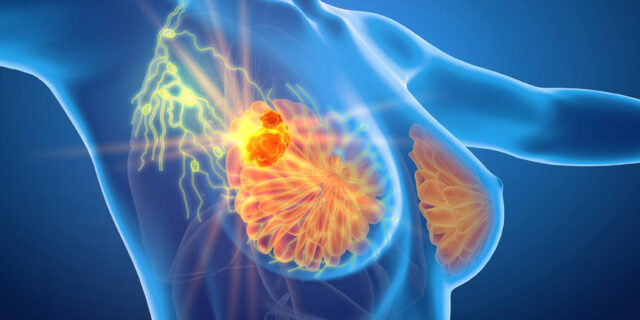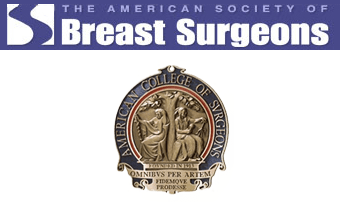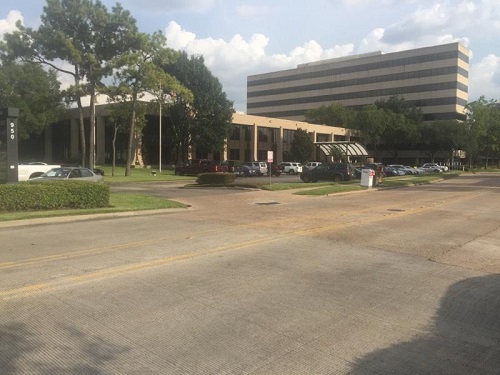Breast Infection
Breast infection also called mastitis that affects breast tissues. The infected breast becomes painful and red, leading to inflammation. Sometimes, the infection may affect both breasts.
The fatty tissue in the breast is often affected by infection, which results in swelling, lumps, and discomfort. A tiny proportion of breast infections are linked to distinctive forms of breast cancer, even though the majority of infections are brought on by nursing or obstructed milk ducts.
Infection may damage the skin covering the breast as the main event. It can also arise due to an underlying skin disorder like hidradenitis suppurativa or a skin lesion like a sebaceous cyst.

Breast Infection and Risk of Breast Cancer
The chances of breast cancer are not increased by breast infection (mastitis). Moreover, breast infection symptoms are comparable to those of inflammatory breast cancer. Breast skin lesions happen as a result of the uncommon breast cancer type. The common symptoms include dimples and an orange-peel-textured breast rash. One or both breasts may swell and become red, similar to mastitis. Inflammatory breast cancer is aggressive. Rapid diagnosis and treatment are necessary. Whenever you observe changes in your breasts, get in touch with your healthcare professional immediately.
Symptoms of Breast Infection
The following are the symptoms of breast infection that mostly appear suddenly.
Causes of Breast Infection
Diagnosis of Breast Infection?
To diagnose a breast infection, doctors will do a physical examination and go through the related symptoms. To rule out breast cancer or another breast problem, they might recommend mammography or another test if a patient is not breastfeeding.
Treatment of Breast Infection
According to the World Health Organization, recommendations and some studies advise treating breastfeeding mothers with breast infection by giving them the proper oral antibiotics and promoting milk flow from the engorged section. Such actions lessen the frequency of abscess development and hence ease symptoms.
Medications for Breast Infection
Oral antibiotics are mainly used to treat breast infections without an abscess. The most popular antibiotics are dicloxacillin and cephalexin. However, there are many additional options. Depending on unique circumstances, the doctor’s choice, and potential medication allergies, an antibiotic may be administered accordingly. And if the woman is breastfeeding, it will not harm the baby. These antibiotics are entirely safe.
It might be challenging to treat chronic breast infection in nonbreastfeeding women. It is typical for breast infections to recur. Sometimes, medications fail to treat this kind of illness effectively. As a result, regular follow-up with your doctor is necessary. The hospital visit will be necessary for IV antibiotics if the infection progresses despite oral antibiotics or in case of a severe abscess that must be surgically treated.
Breast Cancer
Breast cancer is a condition that happens due to the uncontrolled growth or proliferation of the breast cells. There are various types of breast cancer. Which breast cells develop into cancer determines the type of breast cancer.
Different areas of the breast might give rise to breast cancer. A breast has three essential components: connective tissue, ducts, and lobules. The glands that generate milk are called lobules. Milk travels through tubes called ducts to the nipple. The connective tissue, made up of fatty and fibrous tissue, envelops and holds everything in place. The ducts or lobules are where most breast cancers start.
The lymph vessels and blood vessels are the two ways breast cancer may travel outside the breast. Breast cancer is considered to have metastasized when it expands to other bodily regions.
The Prevalence of Breast Cancer
In the world, breast cancer is the leading cause of cancer in women, other than non-melanoma skin cancer. In the United States, almost more than 250,000 new cases of breast cancer were identified in 2017, and breast cancer will be detected in 12 % of all women in the United States throughout their lifespan.
Types of Breast Cancer
Breast cancer has various types. The involvement of the cell types determines the cancer type. The majority of breast malignancies are carcinomas. Since the tumors begin in the gland cells in the milk ducts or the lobules, adenocarcinomas are the most prevalent types of breast cancer, including ductal carcinoma in situ (DCIS) and invasive carcinoma (milk-producing glands). Angiosarcoma and sarcoma are two other cancer types that may develop in the breast.
Additionally, distinct kinds of proteins or genes each tumor may produce are used to categorize breast tumors. Breast cancer cells are examined for the HER2 gene or protein and estrogen and progesterone receptors after a biopsy. The tumor cells are also examined carefully in the laboratory to determine the tumor stage. The particular proteins discovered and the tumor grade may be used to find out the stage and available treatments.
The following are the common types of breast cancer

Treatment Options for Breast Cancer
The treatment options for breast cancer include surgery, chemotherapy, radiation therapy, hormone therapy, immunotherapy, and targeted medication therapy. The position and size of the tumor, the outcomes of your laboratory examinations, and if cancer has spread to other regions of your body are just a few of the variables that will determine what’s best for you. Your healthcare professional will adjust your treatment plan to meet your specific requirements. Taking a combination treatment is also common among many breast cancer women.
Hormonal Treatment
Certain kinds of breast cancer use hormones like progesterone and estrogen to promote their growth. Hormone treatment may either reduce estrogen levels in certain situations or prevent estrogen from binding to breast cancer cells. After surgery, medical professionals most often use hormone treatment to lower the possibility of breast cancer recurrence.
Radiation Treatment
After a mastectomy or lumpectomy, radiation treatment for breast cancer is often used to eradicate any leftover cancer cells. Individual metastatic tumors that are hurting or producing other issues may also be treated with it.
Chemotherapy
Before performing a lumpectomy, your doctor may advise chemotherapy for breast cancer in an attempt to reduce the size of the tumor. It’s often administered after surgery to eliminate any cancer cells that may still be present and lower the chance of relapse. Your doctor or surgeon can suggest chemotherapy as your primary cancer treatment has spread from your breast to other body parts.
Schedule An Appointment Today
If you’re interested in learning more about breast cancer please contact us for a consultation at 832-699-8342 or fill out our contact us form. We will discuss your needs and concerns, and determine your best course of action.


